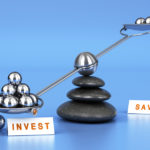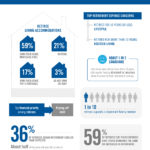 What are the best investment vehicles for holding a safe and highly liquid Emergency Fund? That’s the focus of the third in my latest series of blogs for Motley Fool Canada introducing the basic principles of establishing Financial Independence.
What are the best investment vehicles for holding a safe and highly liquid Emergency Fund? That’s the focus of the third in my latest series of blogs for Motley Fool Canada introducing the basic principles of establishing Financial Independence.
You can find the latest instalment by clicking on the highlighted headline here: One Essential Tip for Achieving Financial Freedom.
In the first two installments of this new series of articles, we looked at two key steps toward Financial Independence: jettisoning debt and, once that is accomplished, applying the resulting surplus to savings and ultimately long-term investments.
As the latest blog argues, you could even argue that an emergency cash cushion should take precedence over both debt elimination and saving/investing.
What should you be looking at in an Emergency Fund? First, you need liquidity: the ability to access the cash at a moment’s notice. Second, you want safety of capital, which really means cash equivalents or fixed income, not equities normally held with a time horizon of more than five years. Third, assuming some sort of fixed income that’s not locked up like a 5-year GIC, you want at least a reasonable rate of interest to be paid on it.
Normally, you shouldn’t regard RRSP investments as an emergency cushion, since you’ll have to pay tax to access the funds. Most people will try to keep relatively high cash balances in their chequing accounts that can serve as a cushion, although typically these accounts pay next to nothing in interest income. One possibility is short-term or redeemable GICs that may pay somewhere between 1 and 2% per annum. Another good place to “park” such funds is a High Interest Savings Account (HISA).
As the name suggests, HISAs pay high amounts of interest, usually more than 2%. According to this source, several pay more than that: as of mid 2019, EQ Bank was paying 2.3%, Motus Bank up to 2.5%, Tangerine was offering a promotional rate of 2.75%, and Motive Financial was paying 2.8%, Wealth One Bank of Canada was paying 2.3% and WealthSimple 2%. Pretty nice returns for liquid cash cushions! Continue Reading…








